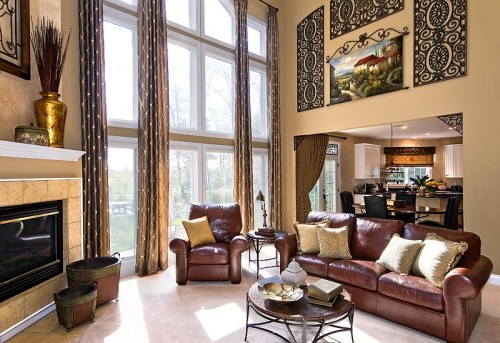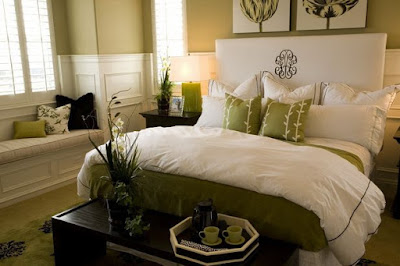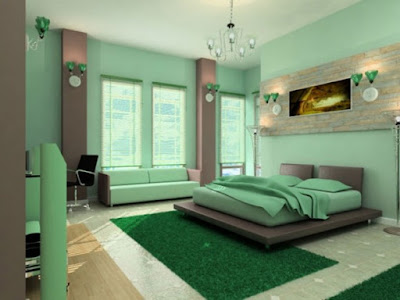Decorating Ideas for High Walls
The whole is composed of the sum of its parts. Whether or not it is greater depends on your decor skill, but you can break down the non-stop walls into manageable thirds to create a sense of unity. The lower third of the dizzying vertical is for furniture, flooring and carpet. Include some tall furniture -- bookcases or cupboards -- to connect the levels. The next third is for prominent wall-hung art -- large paintings, textile hangings, groups of framed photographs -- and curtains. Curtains and drapes are a special category that actually transcends height limits. The final third may be left empty, like the sky, to enhance a sense of space, or it may be decorated with elaborate crown moldings, small wall-mounted art, or hanging focal points, such as chandeliers, colorful kites or mobiles.
Accent walls capitalize on the expanse of "canvas" that a tall wall provides and turn a vast sea of plaster into a focal point. A color-neutral room that gets limited or cool light heats up in a hurry when you colorwash, rag-roll or sponge tangerine and burnt-orange paint all over a single wall. The flame wall then becomes a dramatic backdrop for a huge painting or a wall-hung ethnic carpet. If you prefer bare walls, put a large planter, or a line of them, in front of the painted wall and fill the containers with stands of tall green bamboo. The accent wall could surround a fireplace, adding needed height to it in the cavernous room. A hyacinth-blue wall in an ivory room is the ideal place for the royal purple velvet sofa -- a cool contemporary tableau.
Average room height in contemporary U.S. houses is about 8 feet -- Victorian rooms were routinely 9 feet tall, so any room height under 10 feet isn't remarkable. But you can use the same treatment in an average-height room as in your 12-foot townhouse rooms or your 16-foot ceilinged converted loft. Celebrate the height and keep the room from looking choppy by starting curtains at the ceiling and cascading them to the floor. This covers builder-grade awkward window heights that leave a few feet from the top of the window frame to the ceiling. And it makes your decor in a truly tall room seem intentional; the curtains don't stop somewhere halfway to the ceiling, like an afterthought. When curtains are open, they function as "architectural columns" between expanses of outside views. If the windows are not as grand as the tall walls, hang deep valances from the ceiling to the top window frame, so the windows seem higher than they actually are.
Try an unusual decorating approach to your tall walls. Paint a design or a mural up the wall and over the ceiling. A "panel" of contrasting paint -- aubergine against oyster walls, for example -- stenciled with a large graphic design -- giant abstract blooms or varied geometric shapes -- becomes a pathway to admire the height in the room and a decor element to help determine the colors and placement of furnishings and accents. A traditional ceiling-and-wall mural in the living room will turn your atelier into a Sistine Chapel; a contemporary graphic mural resembles an exuberant Matisse installation. A magical sky ceiling, with cows jumping over the moon and falling stars, spills that starfall down the nursery wall behind the crib until it bursts into flowers in a painted garden.












Comments
Post a Comment